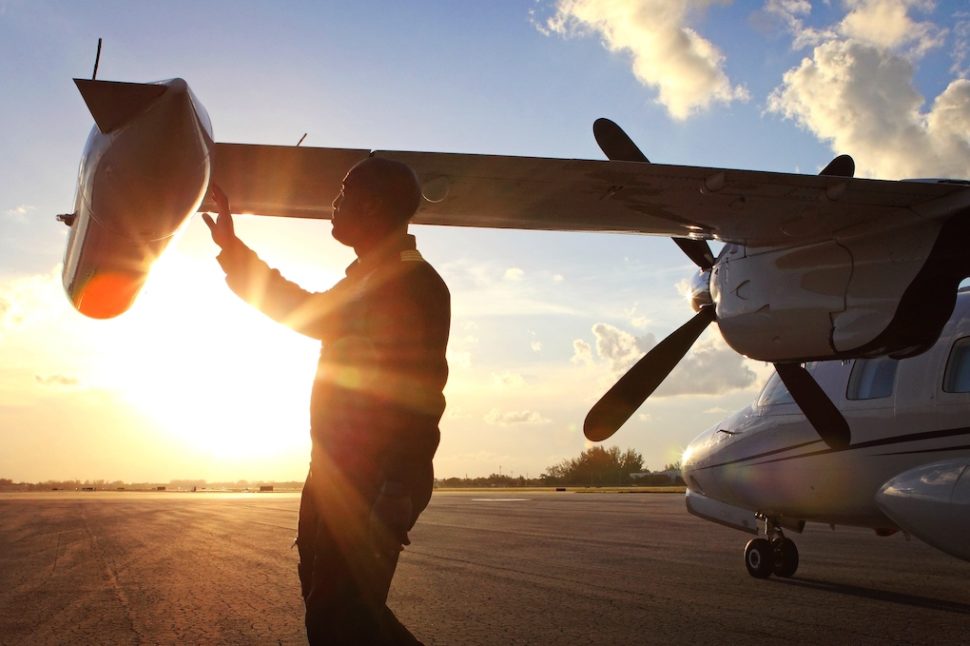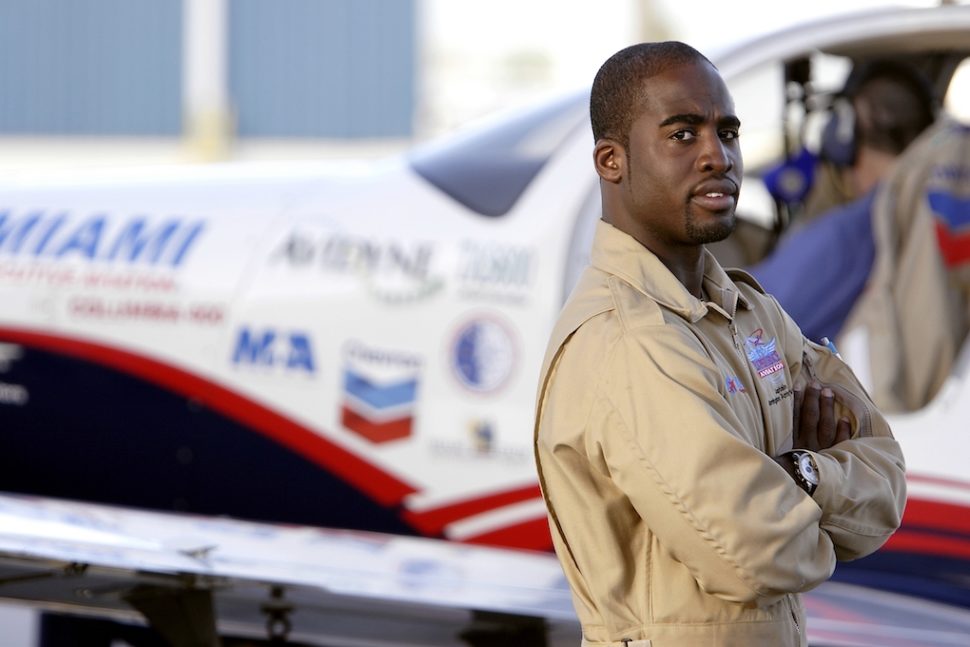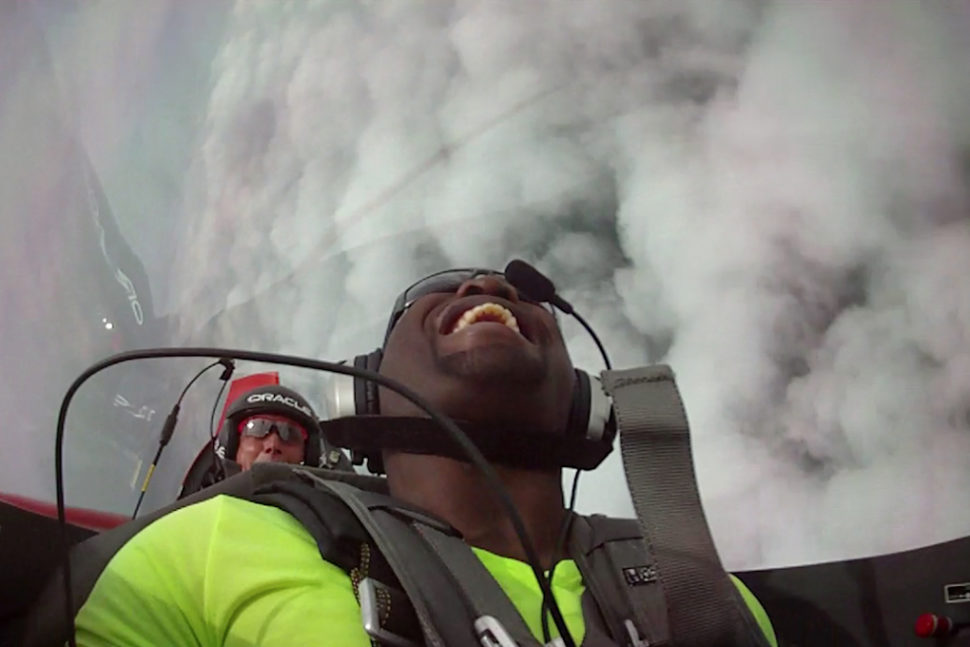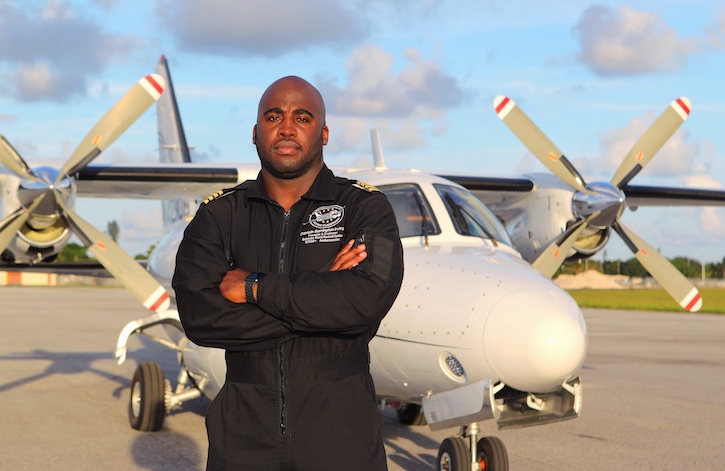Sometimes, seeing someone who looks like you excel in a field you never even thought of, can change your whole life path. That was the case for Jamaican-born pilot Barrington Irving.
In 2007, a fresh, 23-year-old Barrington broke major barriers and borders in the travel industry as the first Black and youngest pilot to fly solo around the world in a single-engine aircraft— all because he first saw another Black man reach success as a commercial pilot.
Irving’s early years
Barrington’s family immigrated to Miami when he was 6-years-old. He grew up in two of the area’s roughest neighborhoods and like many young Black boys around his way, he initially only saw himself growing up to play football.
“That was the realm of my possibility,” Irving told Travel Noire.
As destiny would have it, Irving randomly met a successful Black pilot. He was enamored by his fancy car and jewelry without knowing what he did for a living. The pilot noticed a curious young Irving staring, and came up to him to talk.
“This was early 2001. He came up to me and asked me if I ever thought about aviation. He told me what he did for a living, and I asked him how much money he made, he told me $117 an hour. The rest was history.”

The pilot took Irving under his wings and began mentoring him. Although his schedule was busy, he carved out 30-minutes once a month to talk to Irving about his global travels and life as a Black pilot.
“For 30-minutes each month, I saw the world through his words,” Irving shared. “It changed my life.”
During his teenage years, he worked at the airport and trained with a computer flight simulator to build his aviation skills. He received several football scholarships in high school, but with the nudge of one of his teachers— Ms. Batiste— he decided to pursue aviation.
Ms. Batiste helped him get into the local community college, and he would later transfer to HBCU Florida Memorial University.
“I initially wanted to be a commercial pilot as well. But once 9/11 hit I saw the impact it had on pilots. I began researching and exploring other career paths in aviation. This opened my eyes to the idea of inspiring children.”
As a part of his promise to his mentor to give back, Irving decided that he would seek to fly around the world solo, so that young children could see someone who looked like them and get inspired in the way he was.
Making history
“It took 3 and a half years of planning,” he said. “When I initially set out to accomplish my goal, I didn’t know that I was the first Black man to do so. I knew I was the youngest, but not the first Black man.”
Before taking this trip, he received rejections from sponsors. For over two years he received rejections for sponsorship because of his inexperience and young age.
He eventually received cash donations and aircraft parts from people around his community, and crafted a Cessna Corvalis 400 plane, which he used on his historic adventure he named “Inspiration.”

The record-setting flight took Irving 97-days, with 27 stops across 13 countries. He didn’t have a weather radar or deicing capabilities on the plane, he even mentions that he didn’t know how to swim at the time.
“I lost 30-pounds on that trip. I would fly between 10 and 14 hours straight each day. Some stops were shorter than others because I was in remote parts of the world, with nothing to really do.
He completed the journey on June 27, 2007.
Once on the ground, he remembers being exhausted, but in awe of the number of children that had followed his journey. It inspired him to go even further in helping to change and shape their current landscape.
Irving’s giveback initiatives
In 2005, he started Experience Aviation, a nonprofit organization to help minority youths get into the aviation industry.
Irving has since created his STEM-based program, Flying Classroom, a digital curriculum being used in classrooms all across the country.

“The greatest thing that I’ve done so far in my life is working with students and making a real impact. It wouldn’t be possible without the great team of folks around me. The growth of the program has been 100% organic with all referrals coming by word of mouth.”
To-date, Irving’s programs have reached and impacted a half million students, and it’s likely more.
“I’ll never forget one of the first projects we led where we had students build actual planes,” he recalled. “The kids didn’t have any background in aviation, but I promised to fly the winning team’s model. A few of the students came up to me thanking me and saying this was the first time that this was the first time they had ever completed anything in their life, and it was the first time someone believed in them. Man, that hit me hard. All these kids want is to be heard, to be inspired, and to see that they have a purpose for living.”

Thanks to Mr. Irving breaking borders in an industry typically dominated by non-Black counterparts, we will now see more young Black men and women take to the skies(or other aviation avenues), to break their own borders.
“I think that young people need to aspire to positions that we are not seen in historically” Congresswoman Maxine Waters told Travel Noire in a previous interview. “When they [young people] see these pilots in these uniforms and hats, it allows them to aspire to want to do it too. While we have some Black pilots, we need more!”
For that we say Thank You, Barrington Irving.
To keep up with Barrington or to find out more Flying Classroom, visit: FlyingClassroom.com.
